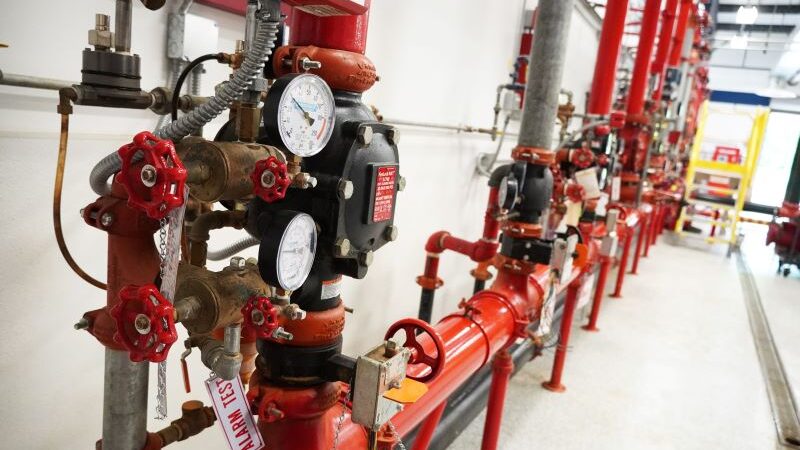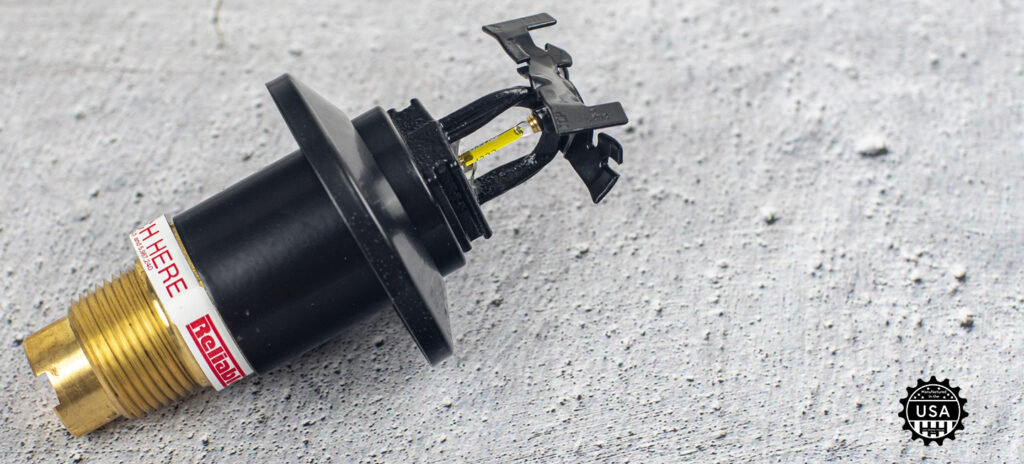Article by Joe Mackley – Senior Account Manager
Unlike a wet sprinkler system, which is filled with water, a dry sprinkler system is filled with pressurized air, supported by an air compressor. When heat opens a sprinkler head, the loss of air pressure in the piping causes a special dry valve to open, or “trip.” The piping then fills with water, which flows out of any open sprinkler head. The water flowing into the system will also trigger a local alarm, alerting people in the building. This alarm may also be transmitted to a central station, which will notify the local fire department.
Dry sprinkler systems are most commonly used in locations where a wet pipe system cannot be heated to prevent freezing. According to NFPA regulations, dry pipe systems are typically installed where ambient temperatures can drop below 40°F.
Typical locations for dry sprinkler systems:
- Unheated buildings or spaces like attics
- Parking garages
- Outside canopies attached to heated buildings
- Large refrigerated coolers
Image Courtesy of Reliable
Dry sprinklers are a type of sprinkler head designed to extend into cold spaces, while keeping water in areas where freezing isn’t a concern. While there are other methods for installing sprinkler systems in areas prone to freezing, dry sprinklers allow wet pipe systems to be used while protecting areas that might experience freezing temperatures. Dry sprinklers can be installed in pendant or sidewall orientations.
Common locations for dry sprinklers:
- External balconies exposed to outside temperatures
- Refrigerated spaces, such as freezer and cooler boxes
- External closets and hallways
- Loading docks
Dry sprinklers work by preventing water from entering the portion of the sprinkler piping exposed to cold temperatures. These sprinklers include a section of piping, often referred to as the barrel, where water is sealed off until the heat element in the sprinkler is activated. When the element releases air, it also releases the seal, allowing water to flow through the sprinkler, impact the deflector, and discharge onto the fire.
If you’d like more information about dry systems or dry sprinklers, please reach out to our team at Oliver Fire Protection.


